The Magic Smoke SE
Tags: computer apple macintosh-se macintosh magic-smoke failure
Fresh off the success of the trace-repaired Genesis, I decided that I was an electronics god and could fix anything. That’s why I ordered this untested Mac SE from a place in Texas, where it was listed as being good to make a movie prop out of.
A friend of mine gave me a Mac SE motherboard with a 68000 accelerator attached to it a few years ago, and so I wanted to see if I could get it to work in another shell. Plus, if the computer itself didn’t work, I could always use the CRT to replace the burned-in one on my Classic II.
When the new computer arrived, I noticed a lot of rust on the ports, which the photos in the ad had taken special effort to hide. That said, the pins on the ports still looked okay, so I immediately left it in my garage for a few months during winter, in case there was something living inside.
Today, I decided I would put in the effort to get it open, make sure nothing seemed particularly bad, and test the machine. Let’s follow along:
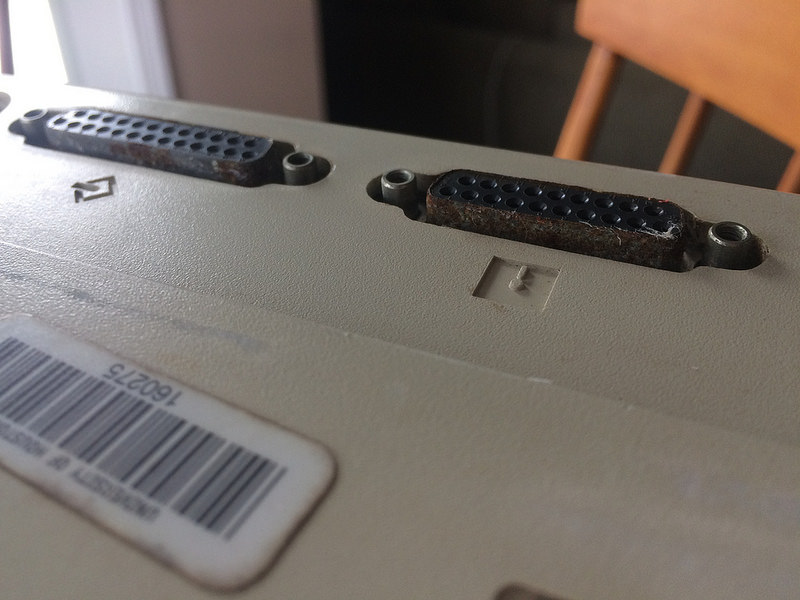
The SCSI and external-floppy ports had a lot of rust on their shields. As for the rest of the case, it was quite yellowed and a little dirty, but it didn’t seem like it had been spending months at the bottom of a flooded basement.
After fighting with the just-slightly-too-short T15 driver, I managed to get all four screws out and popped the case using a plastic spudger in the corners.
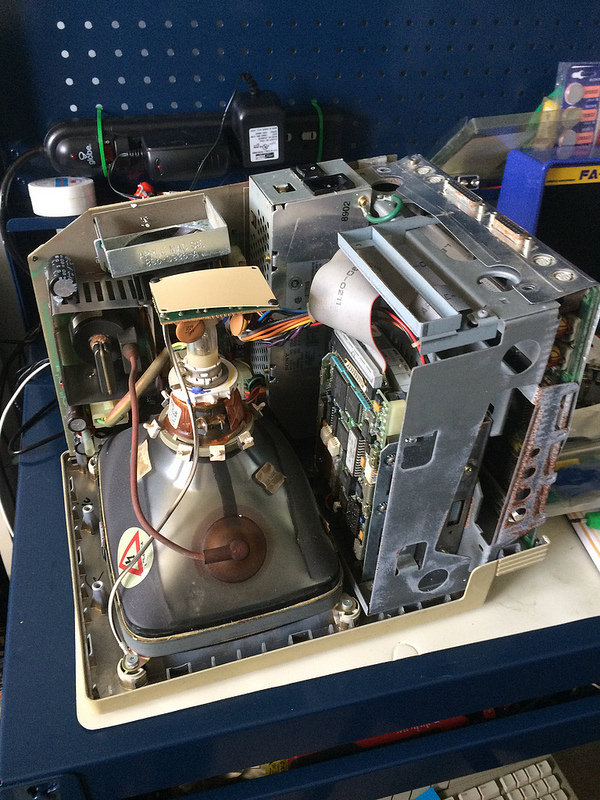
No capacitors on the analogue board seemed bulgy or leaking - and you can really tell with capacitors this big - so I continued on.
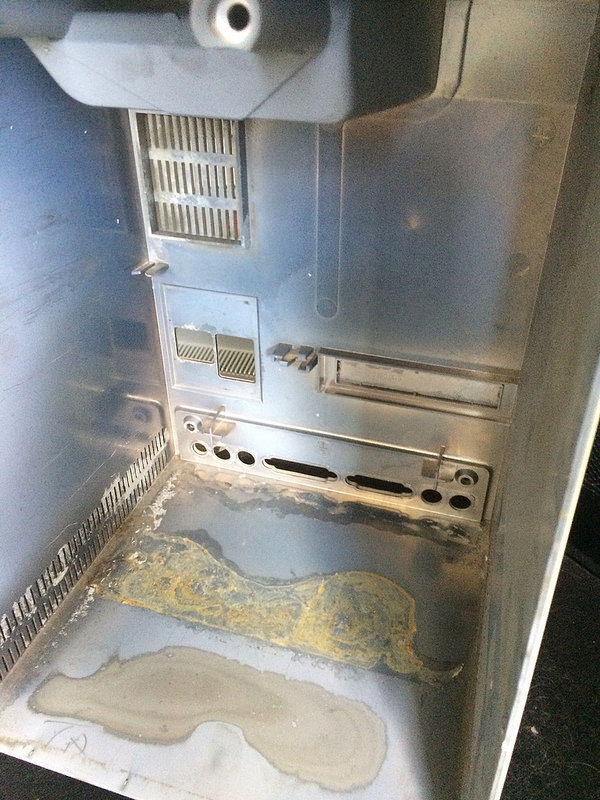
Not sure what was spilled inside this machine, but it was definitely submerged partially in something.
The underside of the motherboard looked surprisingly good, other than some mounting prongs. I’m a little confused by this.
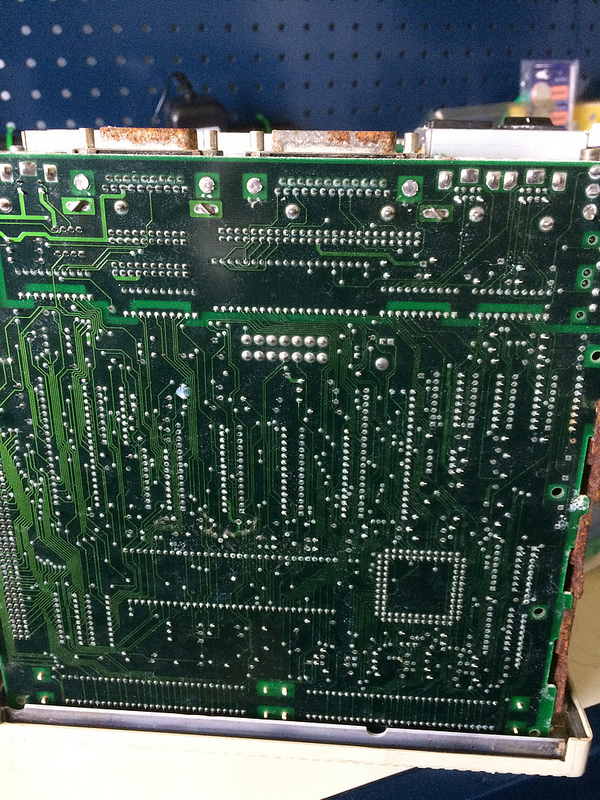
One side of the motherboard drawer looked alright, if a little rusty…
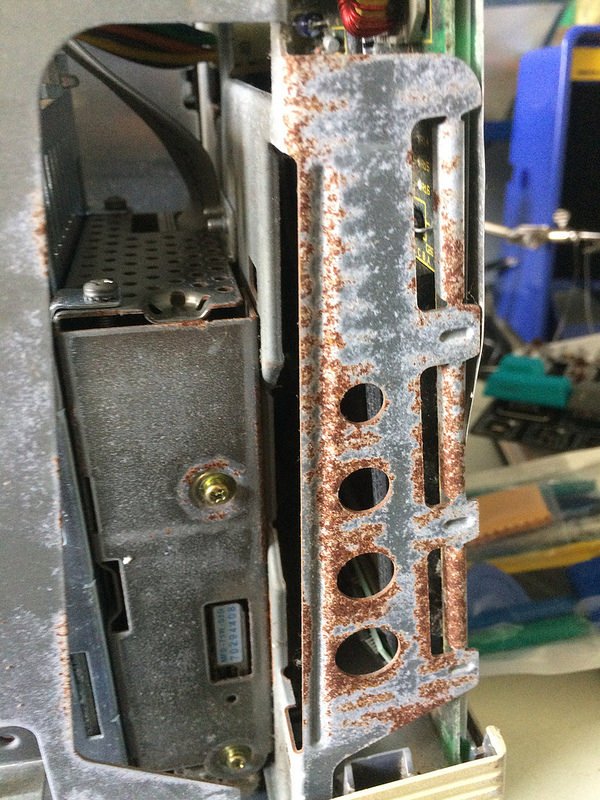
…but the analogue board side was trashed. I ended up prying this gently with a screwdriver to get it to release its hold on the motherboard.
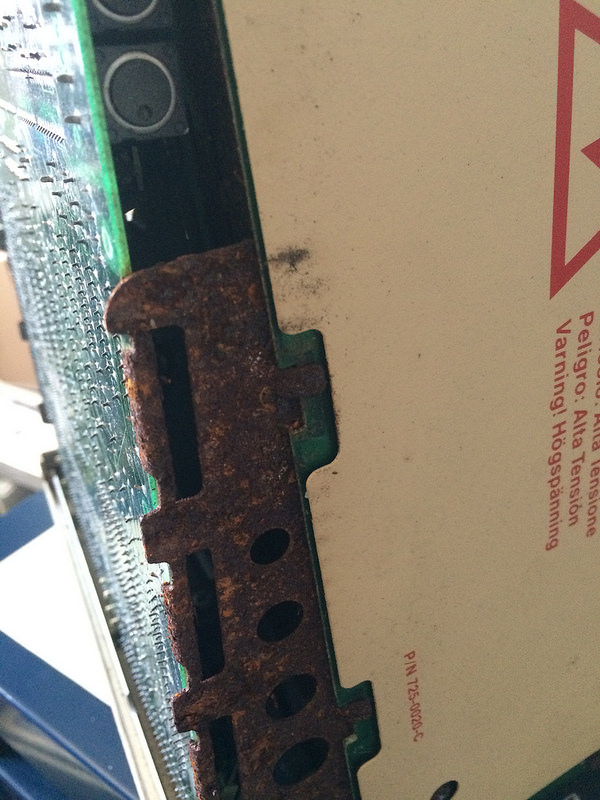
After some nervous removal of all the connectors on the board, trying hard not to touch the CRT neck board, the board was finally out.
Whatever corroded this board definitely got in the power supply. This is the point where I should have stopped, removed the power supply, and inspected it separately. I didn’t.
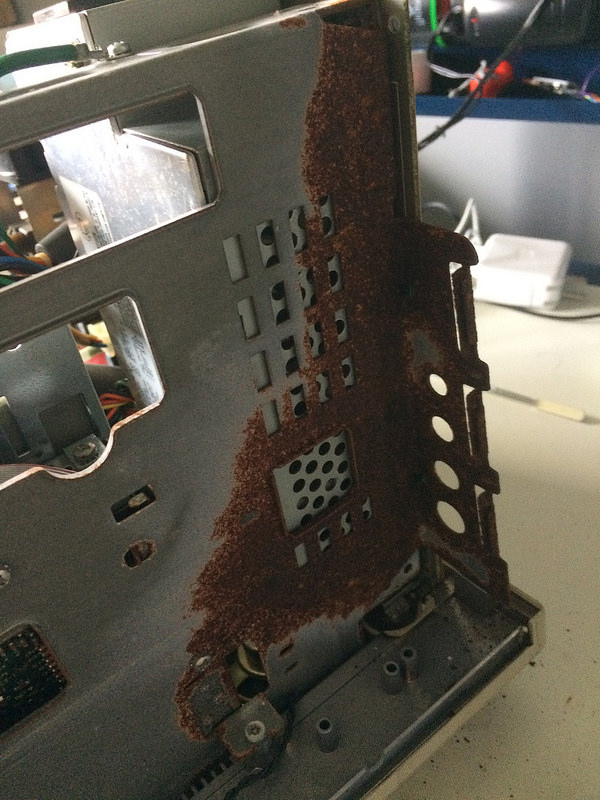
Let’s look at the motherboard. First step is to remove this probably-original clock battery. It’s weird that this battery is in a holder, but my other SE motherboard had the battery directly soldered to the motherboard. Man, is this thing ever old.
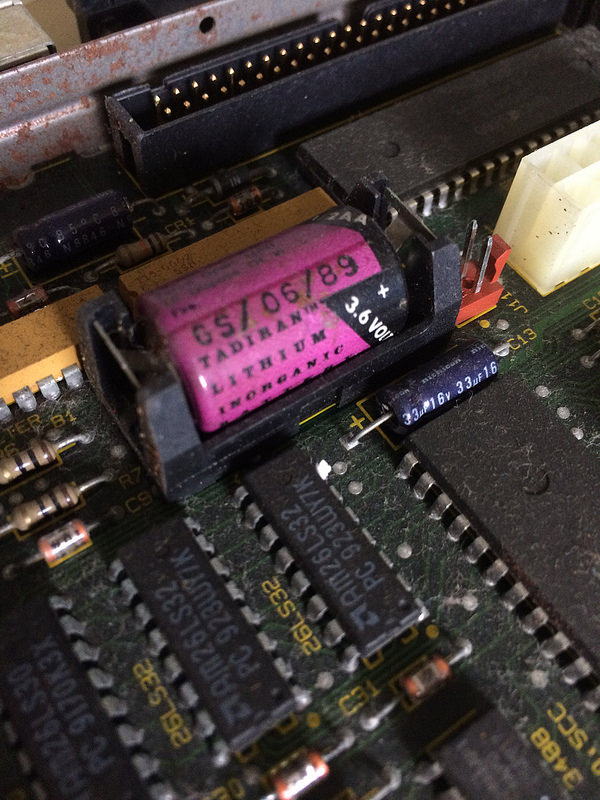
Surprisingly, there was no leakage. There was a little rust flake inside the holder, but that likely came from the motherboard drawer itself.
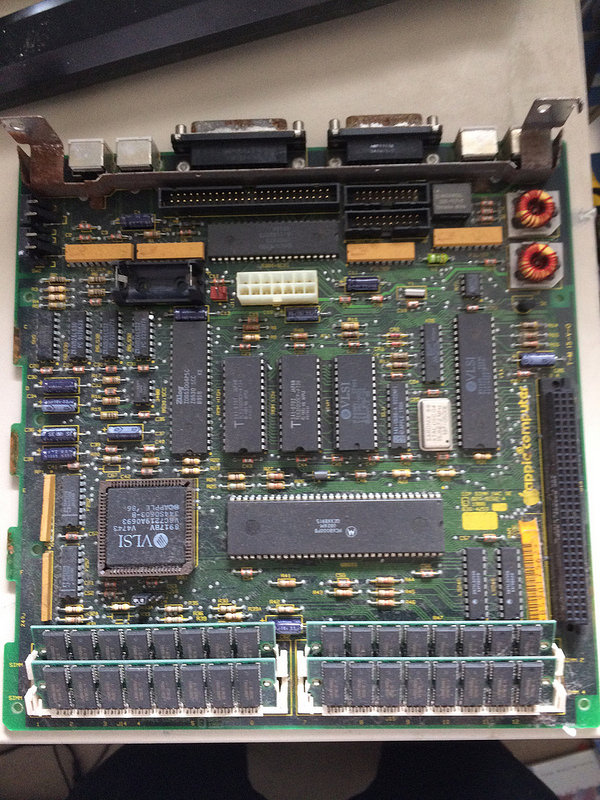
Motherboard looks surprisingly good.
At this point, I put the machine back together again after cleaning up a little bit of the rust on the motherboard drawer.
After plugging it in and flipping the switch, the speaker crackled as if the machine were constantly trying to play a sound through it. Eventually, after too long of a wait, I heard the flyback transformer power up, but nothing came on the CRT.
I shut the machine off, made sure nothing was on fire, and then started it again. This time, I got the flyback transformer noise immediately, as well as a mechanical clunk that sounded like the hard drive spinning up. Pressing my luck, I waited a few more seconds, until I detected the unmistakeable smell of burning components.
Sure enough, after powering the machine off and unplugging it, a barely-visible, thin white wisp of smoke came wafting from the analogue board side. It didn’t smell nearly as bad as the component that I blew up on the Super Famicom, but it still made my workshop stink.
After taking the machine to the garage, again in case it decided to catch fire, I couldn’t find any obviously blown or even damaged component on the analogue board. The problem is likely inside the power supply, probably one of the infamous X2 filter capacitors has burst.
I now think that the sound of the speaker making weird crackling noises was in fact the machine constantly resetting from bad power. I’ll need to track down someone more experienced in discharging these old CRTs, because I don’t want to do the old ground-cable-and-screwdriver trick by myself.
For now, the SE has been returned to the garage, where it awaits another, braver repair.